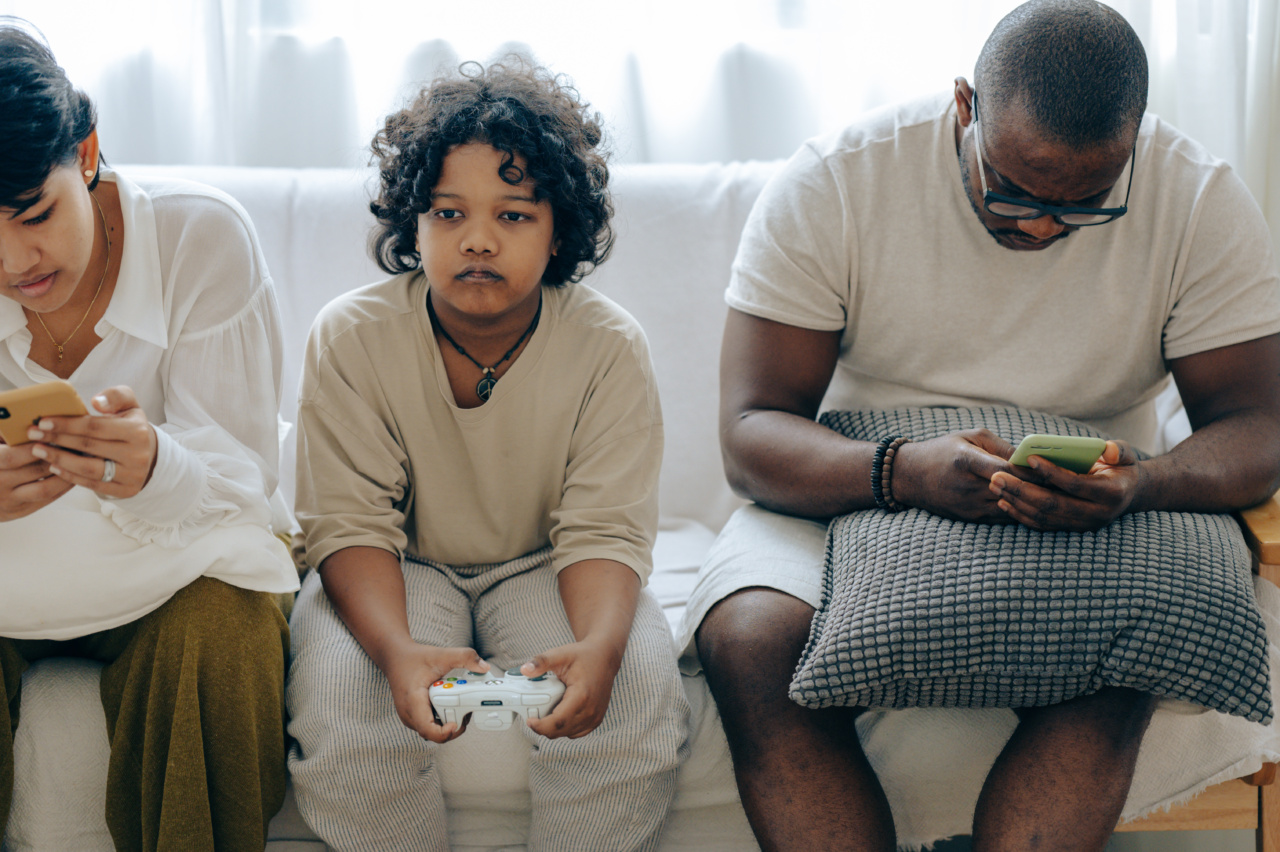The internet has become an integral part of our daily lives, providing us with information, entertainment, and social connections. However, excessive internet usage can lead to a phenomenon known as internet addiction.
This addictive behavior is not limited to adults; children and teenagers are increasingly at risk of developing internet addiction. It is crucial for parents and guardians to be aware of the potential dangers and take preventive measures to ensure the well-being of their children. This article will explore various strategies to prevent internet addiction in children and teens.
Educate and Communicate
Open and honest communication is essential when addressing internet addiction. Start by educating children and teens about the risks and consequences of excessive internet use.
Explain how it can negatively impact their physical and mental health, academics, and relationships. Encourage them to ask questions and express their concerns.
Establish rules and limitations together as a family. Involve children and teens in setting reasonable boundaries for internet usage.
Make sure to explain the rationale behind these rules, emphasizing the importance of a balanced lifestyle that includes offline activities, such as outdoor play, hobbies, and quality time with family and friends.
Lead by Example
Children tend to model their behavior after their parents and caregivers. As role models, it is crucial to practice what we preach. Avoid excessive internet use in front of the children and prioritize offline activities.
Show them that there are healthier alternatives to spending excessive time online.
Engage in activities that promote face-to-face interactions, such as family game nights, outdoor adventures, or simply having conversations over meals.
By demonstrating a healthy relationship with technology, you are providing a positive example for your children to follow.
Create Tech-free Zones
Designate certain areas in the house as tech-free zones, such as bedrooms and dining areas. Establishing these boundaries helps prevent the temptation to constantly check screens and promotes better sleep hygiene.
Make bedrooms device-free by charging electronic devices in a central location overnight. This ensures children and teens are not exposed to screens before bedtime, which can disrupt their sleep patterns.
Additionally, encourage device-free mealtimes where the focus is on enjoying the company of family members without distractions.
By creating tech-free zones, you provide opportunities for quality family time and foster a healthier relationship with technology.
Encourage Offline Hobbies and Activities
Encourage children and teens to explore hobbies and activities that do not involve the internet. Help them discover their interests by exposing them to various options such as sports, arts and crafts, music, reading, or volunteering.
Support and nurture their passions by providing the necessary resources and scheduling dedicated time for these activities.
Engaging in offline hobbies and activities not only helps reduce screen time but also promotes overall well-being. It allows children and teens to develop new skills, pursue their interests, and find a sense of fulfillment outside of the online world.
Establish Screen Time Limits
Setting clear screen time limits is crucial for preventing internet addiction. The American Academy of Pediatrics (AAP) recommends the following guidelines:.
- For children aged 2 to 5 years: Limit screen time to 1 hour per day of high-quality, educational content.
- For children aged 6 years and older: Establish consistent limits on the time spent using media and ensure they prioritize other activities, such as homework, physical activity, and social interactions.
- For teenagers: Discuss and establish reasonable screen time limits together, considering their academic responsibilities and extracurricular activities.
It is essential to enforce these limits consistently and provide alternatives to screen time that children and teens can engage in.
Utilize Parental Control and Monitoring Tools
Parental control and monitoring tools can serve as valuable aids in preventing internet addiction. These tools allow parents to set limits on what content children can access, block certain websites or apps, and monitor their online activities.
While these tools help enforce healthy internet usage, it is essential to strike a balance between monitoring and respecting your child’s privacy.
Openly discuss the use of these tools with your children, emphasizing that they are meant to ensure their safety and well-being.
Promote Digital Literacy and Online Safety
Teach children and teens about digital literacy and online safety. Provide guidance on how to identify reliable sources of information, recognize potential online threats, and avoid engaging in risky online behavior.
Encourage them to think critically about the content they encounter online and engage in respectful online interactions.
By empowering children and teens with the necessary skills to navigate the digital world safely, you reduce the risk of them falling into addictive patterns or becoming victims of cyberbullying or other online dangers.
Encourage Physical Activity
Regular physical activity is essential for maintaining a healthy lifestyle and preventing internet addiction. Encourage children and teens to engage in physical activities they enjoy, such as sports, dancing, or simply going for walks or bike rides.
Physical activity not only provides a break from the internet but also promotes overall well-being, boosts mental health, improves concentration, and reduces stress and anxiety.
Monitor Emotional Well-being
Pay attention to your child or teen’s emotional well-being. Excessive internet use can be a manifestation of underlying emotional issues such as loneliness, depression, or anxiety.
Be attentive to any changes in behavior, mood, or academic performance.
Encourage open conversations about their feelings and provide emotional support. If necessary, consider seeking professional help from a counselor or therapist who specializes in internet addiction or adolescent mental health.
Create Balance and Flexibility
While it is important to set boundaries and establish rules regarding internet usage, it is also crucial to promote balance and flexibility. Allow children and teens to have some autonomy in managing their screen time, within reason.
Encourage them to self-regulate and make responsible choices.
Teach them to recognize when they need a break from the online world and how to engage in healthy offline activities. By fostering a sense of autonomy and responsibility, you empower them to find balance in their digital lives.































